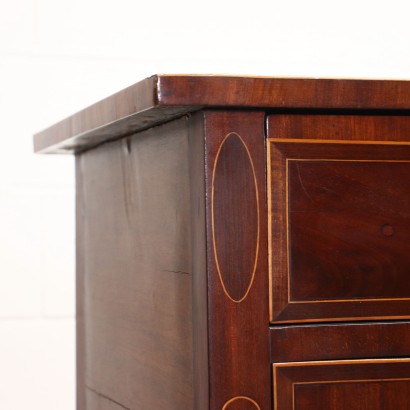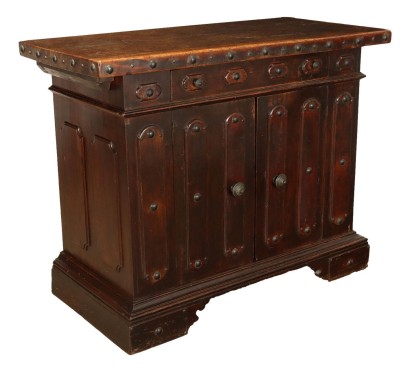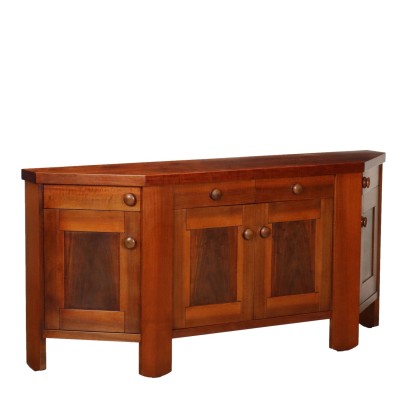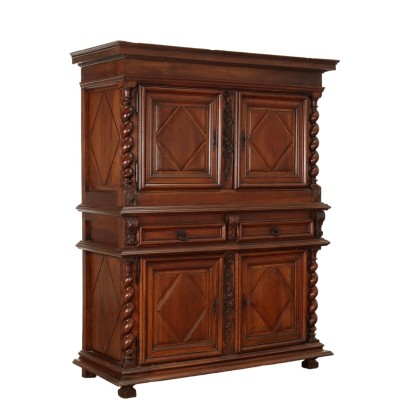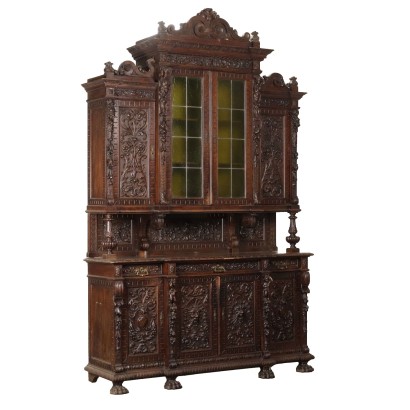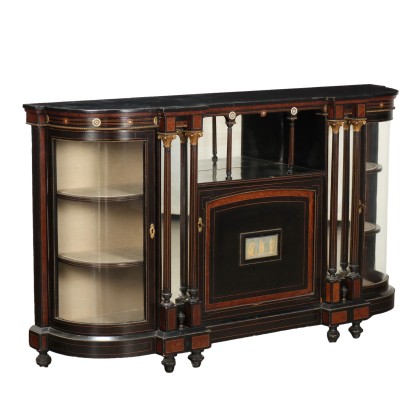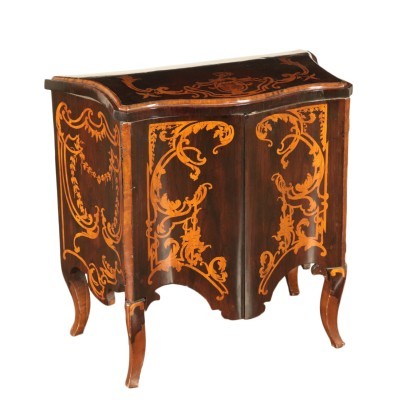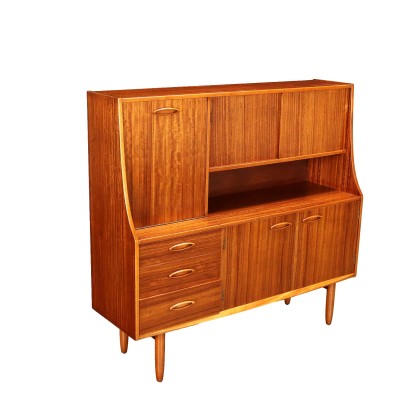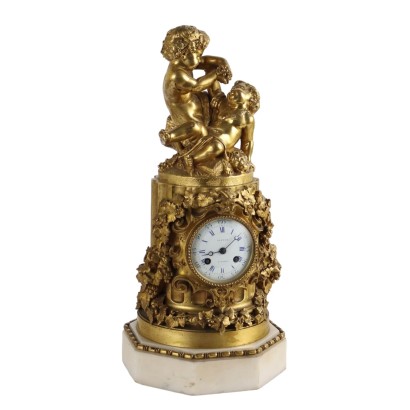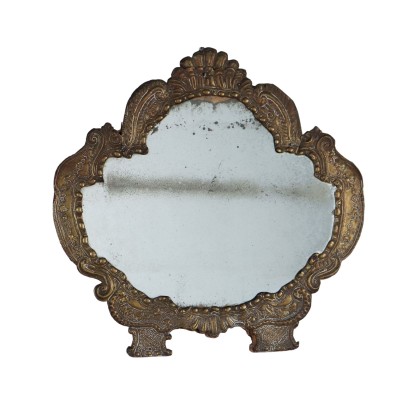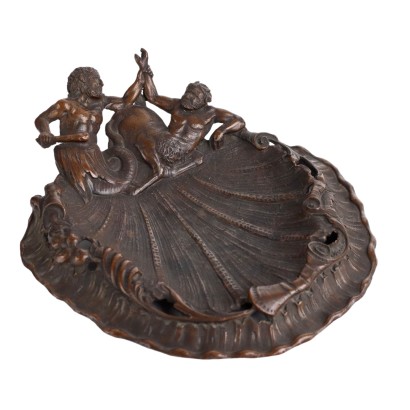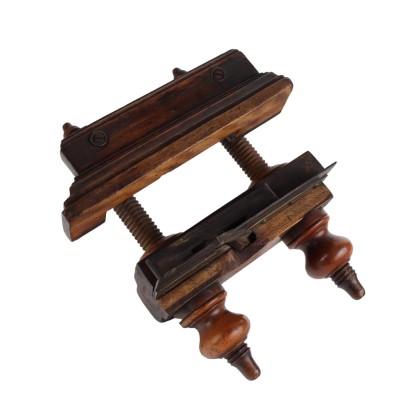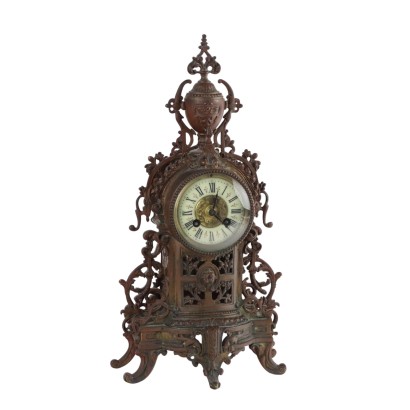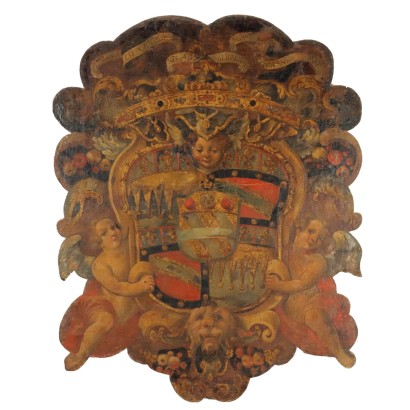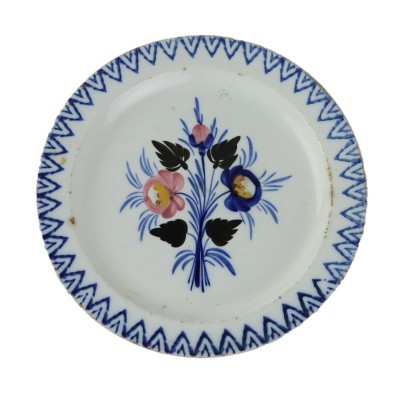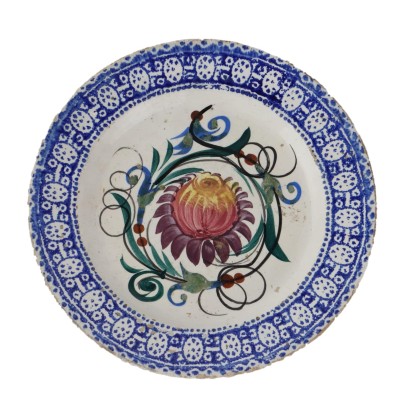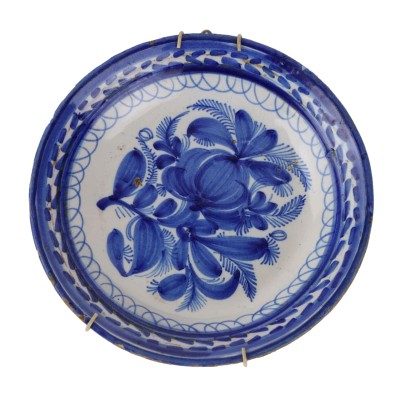George III Sideboard Mahogany United Kingdom XVIII Century - United Kingdom Late 18th Century
Features
United Kingdom Late 18th Century
Style: George III (1750-1810)
Age: 19th Century / 1801 - 1900 , 18th Century / 1701 - 1800
Origin: England
Main essence: Maple , Mahogany , Sessile Oak
Material: Mahogany Veneer
Description
George III serpentine sideboard in mahogany veneer, England late 18th century. Top with maple threads, front with 3 drawers in the band, pair of doors and inlays in mahogany and maple including a vase and fan motifs on the doors. Lack of drawer locks; door locks marked "Lever". Interior in oak. Bronzes replaced handles.
Product Condition:
Product that due to age and wear requires restoration and resumption of polishing.
Dimensions (cm):
Height: 89
Width: 234,5
Depth: 59,5
Additional Information
Style: George III (1750-1810)
It is part of the so-called "Georgian" period.This term designates the stylistic activity that took place in England between 1714 and 1830 and included the reigns of George I, George II, George III and George IV.
It is characterized, at its beginnings, by an attitude of reaction to the Baroque.
Precise characteristics and distinctions of this style are not clearly identifiable in the furniture created in England in the eighteenth century.
In the first half of this century, cabinet-making and the products of the various categories of English applied art were affected by the continuous changes in taste and manifested, in the diversity of trends and influences, the uncertainty of a precise stylistic orientation.
In the second half of the eighteenth century, the sensitivity and exceptional ingenuity of four strong personalities, destined to guide the English taste and customs of the time, intervened in the second half of the eighteenth century: Th. Chippendale, R. Adam, G. Hepplewhite and Th. Sheraton.
Find out more with our insights:
FineArt: Tallboy George II, England c.1730
FineArt: Pair of Irish Mirrors, in George III Style, second half of the 19th century
Age:
19th Century / 1801 - 1900
19th Century / 1801 - 190018th Century / 1701 - 1800
18th Century / 1701 - 1800Main essence:
Maple
Hard, light wood used for inlays. It grows mainly in Austria, but it is widespread throughout the northern hemisphere, from Japan to North America, passing through China and Europe. It is one of the lightest woods ever, tending to white, it is similar to lime or birch wood. The briar is used in the production of ancient secretaires .Mahogany
It is one of the most precious and sought-after woods in cabinet making. It was discovered in Central America around 1600 and began to be imported to England in the 1700s. Much appreciated for its hardness and indestructibility, it became widespread following the blocking of walnut exports from France in 1720 and the consequent elimination of English import duties on mahogany from the colonies in America and India. The most valuable version comes from Cuba, but it became very expensive. At the end of the 18th century it began to be used also in France in Louis XVI, Directory and Empire furniture, its diffusion declined starting from when Napoleon, in 1810, forbade its import. It was generally used in the manufacture of elegant furniture, due to its characteristics and beautiful grain.Sessile Oak
Under the name of oak or oak various types of woods derived from plants of the genus quercus are grouped. They are always resistant, hard and compact woods. Oak is lighter than oak, both are used for more rustic furniture or for the interiors of French and English antique furniture. In other processes it was gradually replaced by the advent of exotic woods considered more valuable since the 18th century.Material: Mahogany Veneer
Other customers have searched:
Credenza, mobile da cucina, armadio, stipo, dispensa, madia..
Ecco qualche spunto dal nostro blog e da FineArt per scoprire di più sul tema credenze:
Leggi di più
Una credenza che dialoga con il passato
Credenza doppio corpo, tesoro di intagli e decorazioni
Piccolo stipo, grande arredo
Stipo toscano a cavallo tra XVI e XVII
Credenza Barium di Luciano Frigerio
Credenza, Mathieu Befort Jeune, Parigi, terzo quarto XIX secolo
Mobile anni '60
Highboard '503' Gianfranco Frattini per Bernini
Mobile bar anni '40
Mobile Bar anni '40 '50, manifattura italiana
Sull'antiquariato in generale dai un'occhiata anche a:
Classic Monday: da un pezzo dei nostri magazzini alla storia dell'antiquariato
L'antiquariato dalla A alla Z: il Dizionario dell'Antiquariato
Il dizionario dell'antiquariato - Lastronatura
Il dizionario dell'antiquariato - Mascherone
Il dizionario dell'antiquariato - Natura morta
Il dizionario dell'antiquariato - Opificio
Il dizionario dell'antiquariato - Pastiglia
Il dizionario dell'antiquariato - Savonarola
Il dizionario dell'antiquariato - Rosone
Leggi di più
Una credenza che dialoga con il passatoCredenza doppio corpo, tesoro di intagli e decorazioni
Piccolo stipo, grande arredo
Stipo toscano a cavallo tra XVI e XVII
Credenza Barium di Luciano Frigerio
Credenza, Mathieu Befort Jeune, Parigi, terzo quarto XIX secolo
Mobile anni '60
Highboard '503' Gianfranco Frattini per Bernini
Mobile bar anni '40
Mobile Bar anni '40 '50, manifattura italiana
Sull'antiquariato in generale dai un'occhiata anche a:
Classic Monday: da un pezzo dei nostri magazzini alla storia dell'antiquariato
L'antiquariato dalla A alla Z: il Dizionario dell'Antiquariato
Il dizionario dell'antiquariato - Lastronatura
Il dizionario dell'antiquariato - Mascherone
Il dizionario dell'antiquariato - Natura morta
Il dizionario dell'antiquariato - Opificio
Il dizionario dell'antiquariato - Pastiglia
Il dizionario dell'antiquariato - Savonarola
Il dizionario dell'antiquariato - Rosone
Product availability
The product can be seen at Cambiago
Immediate availability
Ready for delivery within 2 working days from ordering the product.






